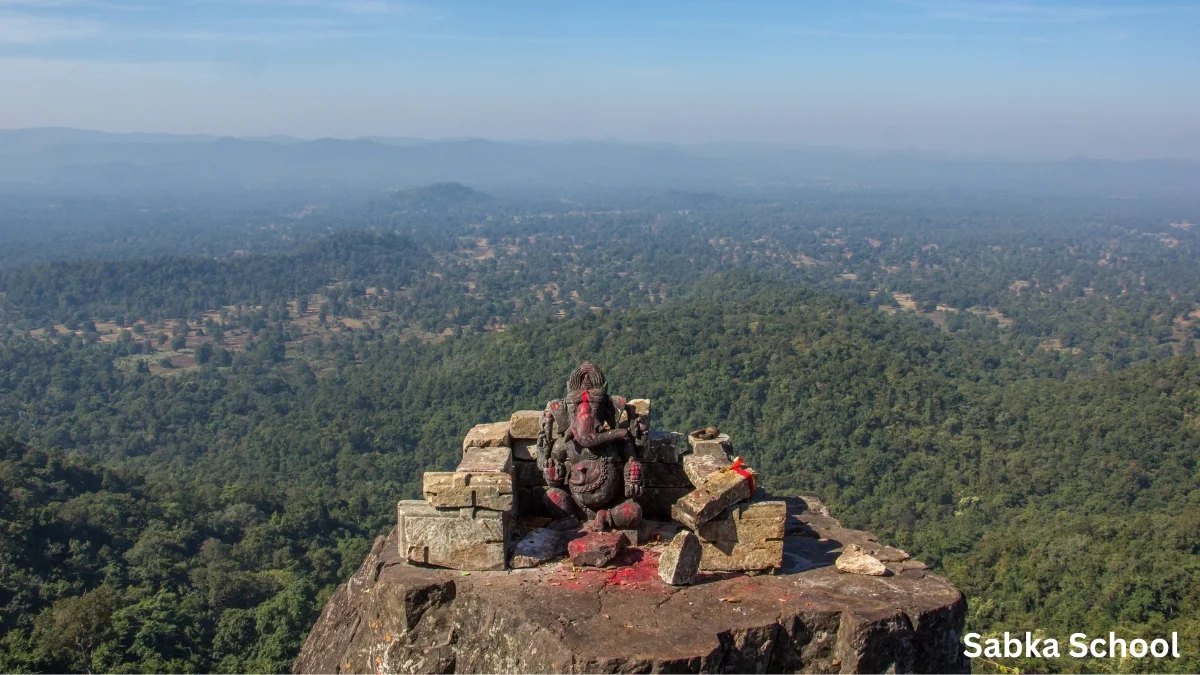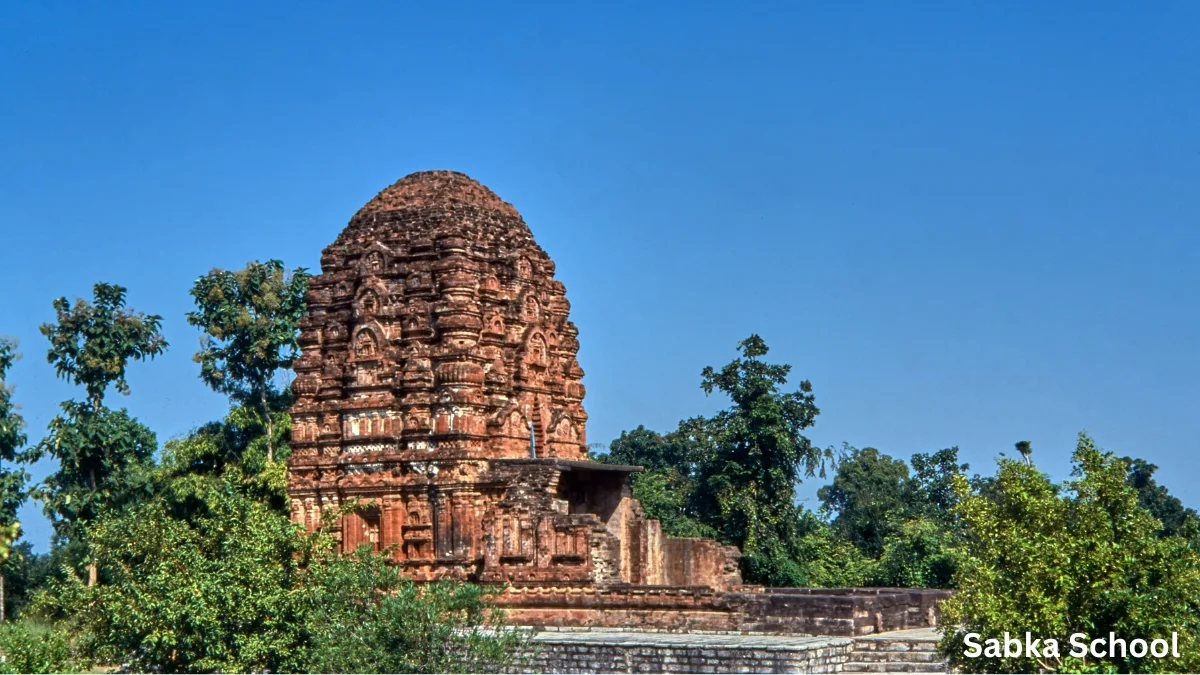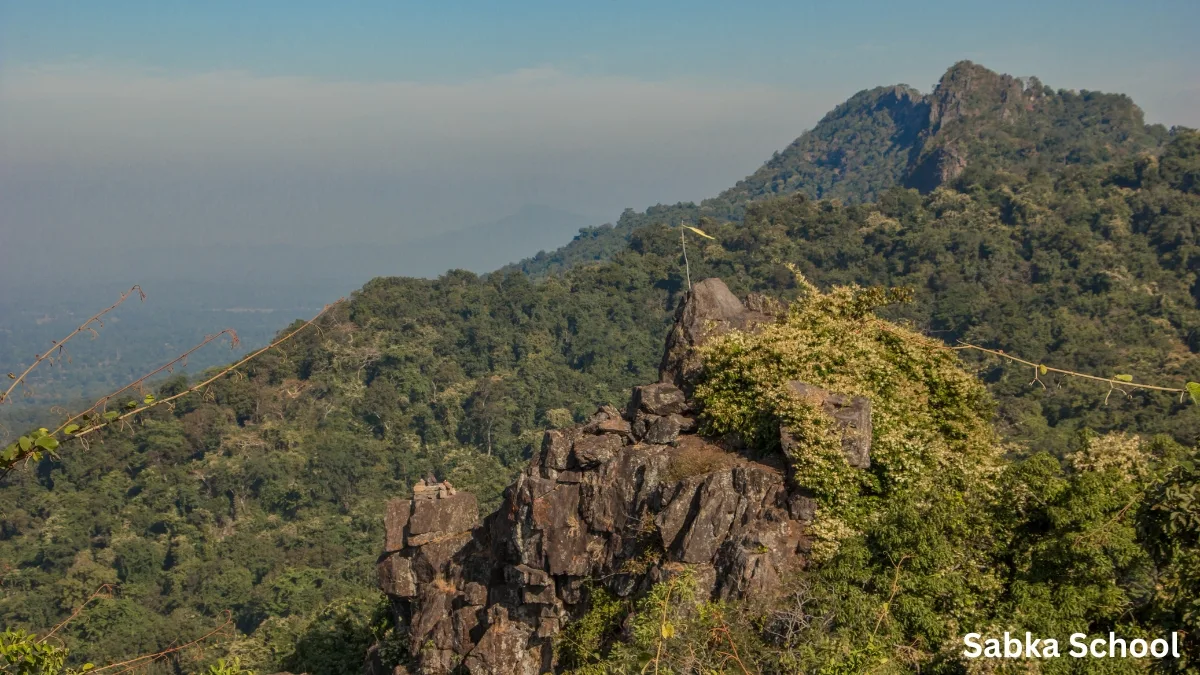Essay on Chhattisgarh in English
Chhattisgarh, also known as the 'Rice Bowl of India,' is a state located in central India. With its lush green forests, serene rivers, and diverse cultural heritage, it is one of the most fascinating and unexplored regions in India. In this essay on Chhattisgarh, we will delve deeper into the various aspects that make this state unique and worth exploring.
Geographical Location of Chhattisgarh
Chhattisgarh is located in the central part of India and is surrounded by six states - Uttar Pradesh, Madhya Pradesh, Maharashtra, Jharkhand, Odisha, and Andhra Pradesh. The state covers an area of 135,191 square kilometers, making it the ninth largest state in India.
The state is situated between 17.29° to 24.15° North latitude and 80.15° to 84.55° East longitude. The northern part of the state is dominated by the Chota Nagpur plateau, while the southern part is covered by the Deccan plateau. The Mahanadi river flows through the eastern part of the state, while the Indravati river flows through the western part.
Chhattisgarh is rich in mineral resources and is known for its large deposits of coal, iron, and limestone. The state has three major river systems - Mahanadi, Godavari, and Narmada. It also has several wildlife reserves and national parks, including the Kanger Valley National Park, Indravati National Park, and Barnawapara Wildlife Sanctuary.
Chhattisgarh has a diverse topography, with the northern part of the state being hilly and forested, while the southern part is predominantly flat with fertile plains. The state experiences a humid subtropical climate, with hot summers and mild winters. The monsoon season in Chhattisgarh lasts from June to September, and the state receives an average annual rainfall of 1,200 mm.
Overall, Chhattisgarh's location and topography make it a unique and fascinating destination for travelers and nature enthusiasts alike.
History of Chhattisgarh
Chhattisgarh has a rich and varied history that dates back to ancient times. The region was ruled by several dynasties, including the Mauryas, Satavahanas, and Kalchuris. The famous Chinese traveler Hiuen Tsang also visited this region during the 7th century and described it as a prosperous kingdom.
During the medieval period, the region was ruled by various kingdoms, including the Rajput and Maratha kingdoms. The region was known as Dakshina Kosala during this time, and it was ruled by the Nagvanshi dynasty for several centuries.
In the early 18th century, Chhattisgarh came under the control of the Maratha Empire. After the British defeated the Marathas in the Third Anglo-Maratha War in 1818, the region was included in the Central Provinces.
After India gained independence in 1947, Chhattisgarh remained a part of Madhya Pradesh. However, due to a demand for a separate state, Chhattisgarh was carved out of Madhya Pradesh in 2000.
Chhattisgarh has a rich cultural heritage that is reflected in its art, music, and festivals. The state is home to several tribal communities, including the Gonds, Baigas, and Oraons, who have a distinct culture and way of life.
Overall, the history of Chhattisgarh is fascinating and diverse, and it has played a crucial role in shaping the cultural and social fabric of the state.
Culture and Traditions of Chhattisgarh
Chhattisgarh has a unique culture that is a blend of tribal and regional traditions. The state is home to several indigenous communities, each with their distinct customs and way of life. The state's vibrant culture is reflected in its art, music, dance, and festivals.
Art and Craft:
Chhattisgarh is known for its rich tradition of handicrafts, which includes bamboo and woodwork, bell metal craft, terracotta, and stone carving. The state is also famous for its handloom products, including silk and cotton fabrics, which are adorned with intricate designs and motifs.
Music and Dance:
The state has a rich tradition of folk music and dance. Some of the popular folk dances of Chhattisgarh include Panthi, Raut Nacha, Karma, and Pandwani. The state is also known for its classical dance forms, such as Kathak and Bharatanatyam.
Festivals:
Chhattisgarh is home to several colorful and vibrant festivals that are celebrated throughout the year. Some of the popular festivals of the state include Bastar Dussehra, Madai Festival, Rajim Kumbh Mela, and Chakradhar Samaroh. These festivals are an excellent opportunity for visitors to experience the state's unique culture and traditions.
Cuisine:
Chhattisgarh's cuisine is primarily vegetarian, and it includes a variety of traditional dishes. Some of the popular dishes of the state include rice, dal, and aloo bharta. The state is also known for its street food, which includes items such as bhajiyas, poha, and samosas.
Traditions:
Chhattisgarh's traditions are deeply rooted in its indigenous communities. These communities have a rich tradition of folk tales, myths, and legends, which have been passed down through generations. The state's traditions also include a deep reverence for nature and a strong belief in the power of spirits and deities.
Overall, Chhattisgarh's culture and traditions are a unique and integral part of its identity. They reflect the state's rich history and diverse population and offer visitors a glimpse into the state's fascinating cultural heritage.
Natural Beauty of Chhattisgarh
Chhattisgarh is a land of natural beauty, with vast forests, majestic waterfalls, and stunning landscapes. The state is home to several national parks, wildlife sanctuaries, and scenic locations that attract tourists from all over the world.
National Parks and Wildlife Sanctuaries:
Chhattisgarh is home to several national parks and wildlife sanctuaries, which are known for their rich biodiversity. Some of the popular national parks and wildlife sanctuaries in the state include Kanger Valley National Park, Barnawapara Wildlife Sanctuary, Udanti-Sitanadi Wildlife Sanctuary, and Indravati National Park.
Waterfalls:
Chhattisgarh is known for its majestic waterfalls, which are a sight to behold. Some of the popular waterfalls in the state include Chitrakote Falls, Tirathgarh Falls, and Amritdhara Falls. These waterfalls are surrounded by lush green forests and offer a breathtaking view of the natural beauty of the state.
Caves:
Chhattisgarh is home to several ancient caves, which are a testament to the state's rich cultural heritage. Some of the popular caves in the state include Kutumsar Caves, Kailash Caves, and Dandak Caves. These caves are known for their unique rock formations and are a must-visit for anyone interested in history and archaeology.
Lakes and Rivers:
Chhattisgarh is also known for its beautiful lakes and rivers, which add to the state's natural beauty. Some of the popular lakes and rivers in the state include Shivnath River, Hasdeo River, and Dalpat Sagar Lake. These water bodies offer a serene and peaceful environment and are perfect for a leisurely picnic or a romantic getaway.
Overall, Chhattisgarh's natural beauty is awe-inspiring and captivating, with its vast forests, stunning landscapes, and majestic waterfalls. The state is a nature lover's paradise and offers a unique and unforgettable experience for visitors.
Famous Tourist Attractions in Chhattisgarh
Chhattisgarh is a land of diverse cultural and natural attractions, with several historic sites, temples, waterfalls, and wildlife sanctuaries that are popular among tourists. Here are some of the famous tourist attractions in Chhattisgarh:
Chitrakote Falls:
Chitrakote Falls is one of the most popular tourist attractions in Chhattisgarh. Located in Bastar district, it is also known as the "Niagara Falls of India". The waterfall is formed by the Indravati River and cascades down from a height of 30 meters, surrounded by lush green forests.
Kanger Valley National Park:
Kanger Valley National Park is located in the Bastar district and is known for its rich biodiversity. The park is home to several species of animals, including tigers, leopards, and wild buffaloes. It also boasts of several scenic locations, including Kotumsar Cave, which is one of the longest natural caves in the world.
Jagdalpur:
Jagdalpur is a historic city located in the Bastar district and is known for its rich cultural heritage. The city boasts of several historic sites, including the Bastar Palace, which was once the residence of the Bastar kings. Jagdalpur is also known for its colorful markets, where you can buy traditional handicrafts and textiles.
Sirpur:
Sirpur is an ancient city located in the Mahasamund district and is known for its historic sites and temples. The city was once a center of Buddhist and Hindu culture and boasts of several ancient temples and monasteries. The Laxman Temple, built in the 7th century, is one of the most popular tourist attractions in Sirpur.
Bhilai Steel Plant:
Bhilai Steel Plant is one of the largest steel plants in India and is located in the Durg district. The plant is known for its state-of-the-art technology and infrastructure and is a major tourist attraction in Chhattisgarh. Visitors can take a guided tour of the plant and learn about the process of steelmaking.
Overall, Chhattisgarh is a land of diverse tourist attractions, with something to offer for everyone. From natural wonders to historic sites and cultural attractions, the state is a must-visit destination for tourists who want to explore the rich and vibrant culture of India.
Economic Development in Chhattisgarh
Chhattisgarh is a resource-rich state with abundant reserves of minerals such as coal, iron ore, and bauxite. The state is also home to several power plants and industries, including steel, aluminum, and cement. Over the years, Chhattisgarh has emerged as one of the fastest-growing states in India, with a focus on industrial development and infrastructure.
The state government has taken several initiatives to promote economic growth and attract investments in Chhattisgarh. Here are some of the key factors that have contributed to the economic development of the state:
Mineral resources:
Chhattisgarh is known for its abundant reserves of minerals such as coal, iron ore, and bauxite. The state is home to several mines and mining companies, which have played a significant role in the state's economic growth. The mineral industry has created numerous job opportunities and has contributed to the state's revenue.
Industrial development:
Chhattisgarh has emerged as a major industrial hub, with a focus on steel, aluminum, and cement industries. The state is home to several large-scale industries, including Bhilai Steel Plant, which is one of the largest steel plants in India. The state government has taken several initiatives to promote industrial growth, including the establishment of industrial areas and investment incentives.
Infrastructure development:
The state government has invested heavily in the development of infrastructure in Chhattisgarh. The state has a well-connected network of roads, railways, and airports, which has facilitated the movement of goods and people. The government has also focused on the development of power plants, which has ensured a steady supply of electricity to the industries.
Tourism:
Tourism has emerged as a major contributor to the economy of Chhattisgarh. The state is home to several natural and cultural attractions, which have attracted tourists from all over the world. The government has taken several initiatives to promote tourism, including the development of tourist infrastructure and marketing campaigns.
Chhattisgarh has made significant progress in economic development over the years, with a focus on industrial development and infrastructure. The state's rich mineral resources, well-developed industrial sector, and tourism potential have contributed to its economic growth and are expected to drive future development.
Short Essay on Chhattisgarh
Chhattisgarh is a state located in central India, known for its rich cultural heritage, vibrant history, and natural resources. The state was carved out of Madhya Pradesh in 2000, making it the youngest state in India.
Chhattisgarh is home to diverse ethnic groups, including tribal communities that have preserved their unique culture and traditions. The state is known for its vibrant folk dance and music, which reflects the local customs and traditions. The popular dance forms of Chhattisgarh include Raut Nacha, Pandwani, Panthi, and Karma.
The state has a rich history that can be traced back to the Mauryan era. Chhattisgarh was ruled by various dynasties, including the Satavahanas, the Mauryas, and the Gupta Empire. Later, the region was ruled by various Rajput clans and Maratha rulers. The British also had a significant presence in the region during the colonial era.
Also Read: Essay on Bihar: An Insight into the State's Rich Culture and Heritage
Chhattisgarh is blessed with abundant natural resources, including minerals such as coal, iron ore, and bauxite. The state is also known for its lush forests, wildlife, and waterfalls. Some of the popular tourist destinations in Chhattisgarh include Chitrakoot Falls, Bastar, Kawardha Palace, and Sirpur.
The economy of Chhattisgarh is primarily based on agriculture and mining. The state is known for its rice, maize, and pulses production. The mineral-rich state is also a major contributor to the country's mineral production, with coal mining being the dominant industry.
Chhattisgarh is also making significant strides in education and healthcare. The state has several renowned universities and institutes, including Indian Institute of Technology (IIT) Bhilai, National Institute of Technology (NIT) Raipur, and All India Institute of Medical Sciences (AIIMS) Raipur.
In conclusion, Chhattisgarh is a beautiful state with a rich cultural heritage, history, and natural resources. The state has immense potential for growth and development and is on its way to becoming a major economic powerhouse in the country.
10 Lines Essay on Chhattisgarh
- Chhattisgarh is a state located in central India.
- It was formed on November 1, 2000, after being carved out of Madhya Pradesh.
- The state is known for its diverse ethnic groups and unique tribal culture.
- Chhattisgarh is home to several prominent wildlife sanctuaries and national parks.
- The state is rich in minerals and is a significant contributor to the country's mineral production.
- Chhattisgarh has several renowned universities and institutes.
- It is also known for its vibrant folk dance and music.
- The economy of Chhattisgarh is primarily based on agriculture and mining.
- Some of the popular tourist destinations in the state include Chitrakoot Falls, Bastar, and Kawardha Palace.
- Overall, Chhattisgarh has immense potential for growth and development, and is on its way to becoming a major economic powerhouse in the country.
FAQs about Chhattisgarh
Here are some frequently asked questions about Chhattisgarh:
Where is Chhattisgarh located?
Chhattisgarh is located in central India, and is surrounded by the states of Madhya Pradesh, Uttar Pradesh, Jharkhand, Maharashtra, and Orissa.
What is the capital of Chhattisgarh?
The capital of Chhattisgarh is Raipur.
What are the major languages spoken in Chhattisgarh?
The major languages spoken in Chhattisgarh are Chhattisgarhi, Hindi, and English.
What is the climate of Chhattisgarh like?
Chhattisgarh has a tropical climate, with hot and humid summers and mild winters. The monsoon season lasts from June to September.
What are some popular tourist destinations in Chhattisgarh?
Some popular tourist destinations in Chhattisgarh include Chitrakoot Falls, Bastar, Kawardha Palace, Sirpur, and Mahamaya Temple.
What is the economy of Chhattisgarh based on?
The economy of Chhattisgarh is primarily based on agriculture and mining, with rice, maize, and pulses being major crops, and coal, iron ore, and bauxite being major minerals.
What are some famous festivals celebrated in Chhattisgarh?
Some famous festivals celebrated in Chhattisgarh include Dussehra, Diwali, Holi, and Bastar Dussehra.
What are some famous dance forms of Chhattisgarh?
Some famous dance forms of Chhattisgarh include Raut Nacha, Pandwani, Panthi, and Karma.
What are some famous universities and institutes in Chhattisgarh?
Some famous universities and institutes in Chhattisgarh include Indian Institute of Technology (IIT) Bhilai, National Institute of Technology (NIT) Raipur, and All India Institute of Medical Sciences (AIIMS) Raipur.
What is the population of Chhattisgarh?
According to the 2011 census, the population of Chhattisgarh is approximately 25.5 million.
Conclusion
Chhattisgarh is a vibrant and culturally rich state located in central India. It has a fascinating history and a diverse population, including several ethnic groups and tribal communities. The state is known for its natural beauty, abundant wildlife, and numerous tourist destinations. It has a strong agricultural and mining base, and is home to several renowned universities and institutes. Overall, Chhattisgarh has a lot of potential for growth and development, and is on its way to becoming a major economic powerhouse in the country.
We hope that you enjoyed reading essay on chhattisgarh. If you have any queries or issues, please feel free to connect with us on our Facebook page. We are always happy to help and would love to hear your feedback. Thank you for taking the time to read our essay, and we look forward to hearing from you soon.



